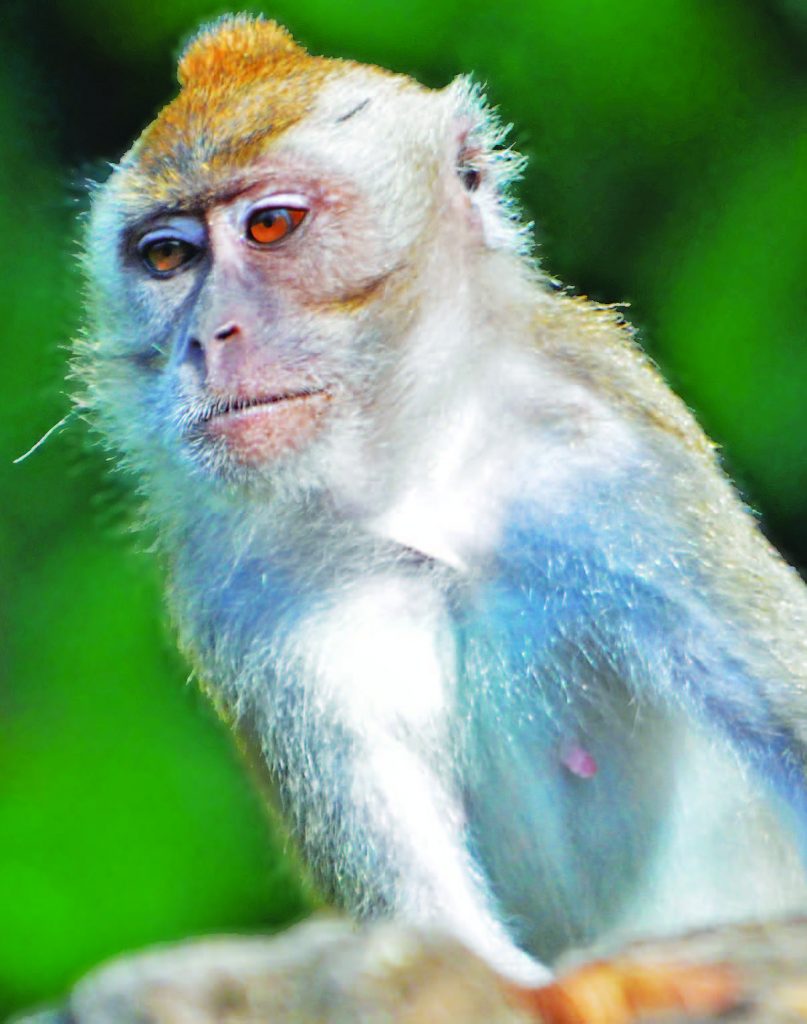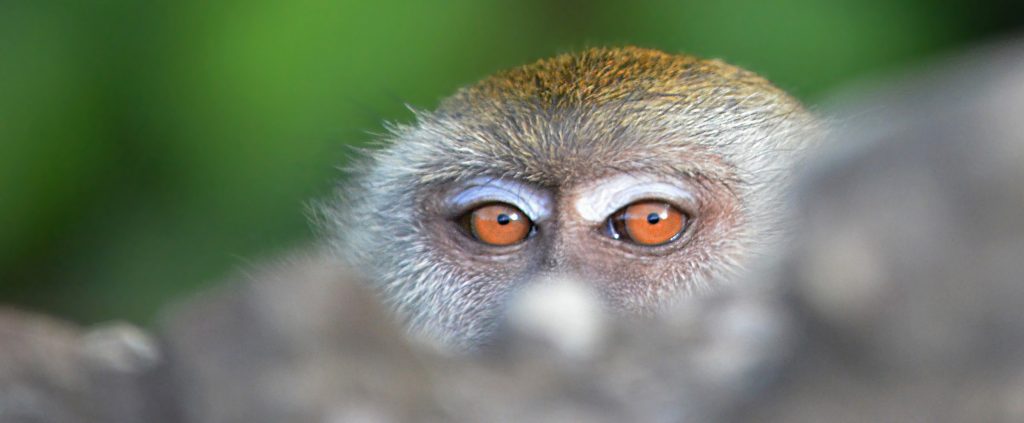I was recently in the steaming rainforests of Subic Bay, quietly tracking monitor lizards, flying foxes, hornbills, and other wonderful critters. The most congenial was definitely a naughty old macaque who reminded me of Kiko Matsing from the classic 1980s children’s show, Batibot.
The Philippine macaque (Macaca fascicularis philippensis) is the country’s sole monkey species. It is a subspecies of the long-tailed macaque (M. fascicularis) which ranges throughout Southeast Asia.

Macaques are small monkeys which inhabit most of Asia, plus parts of Europe and Africa. There are 22 species and many can be found near human farms and settlements. Well-known representatives include the temple-dwelling rhesus macaque (M. mulatta), hot-bath-loving Japanese snow macaque (M. fuscata), plus the pig-tailed macaque (M. nemestrina) which, in Malaysia, has been trained to climb and harvest coconuts.
Old-world charm
Classified as “old world monkeys” because their noses face downward and they lack prehensile tails, macaques are diurnal, intelligent, and omnivorous. Most have long tails, a few have short ones, while some have none. Weight varies per species, ranging from the 20-pound Sri Lankan toque macaque (M. sinica), to the Tibetan macaque (M. thibetana), which can tip the scales at nearly 70 pounds! Minus their tails, their average length would be around 30 inches.

Monkey business
Macaques are always on the lookout for a good meal, gobbling up succulent fruits, jaw-breaking seeds, and the occasional meaty treat. In Thailand and Myanmar, they’ve even been known to use crude wood and stone tools to break open nuts, clams, and all sorts of shellfish. Typically residing in mountains and lowland forests near water, the sneaky simians have encroached into cities, having become more and more accustomed to humans.
Due to generations of public feeding, many have learned to snatch food, cameras, bags, and anything else they can grab. Some macaque family groups, called troops, have even learned to raid houses – even opening refrigerators to get snacks!
In Hongkong, feeding plus a lack of natural predators have caused populations of rhesus and long-tailed macaques to become bold and aggressive. In India, where devout Hindus worship the Monkey God Hanuman, rambunctious macaques are known to charge and bite people – especially if there’s a chance to get food. The Times of India reported that in Delhi alone, 1,825 monkey bites were reported over the first 11 months of 2015! As urban monkey and human populations grow, monkey encounters will become more and more common. Solutions range from minimizing public feeding to neutering wild macaques.

Despite their resemblance to humans, always treat macaques as wild animals.
If you want to see them, travel to Subic Bay in Zambales where large troops still abound. Just remember not to feed them and to watch your gear – those nifty little hands are fast!
Lastly, if you see monkeys of any kind being sold, please report it to Animal Scene and your local wildlife protection agency. Monkeys are legally protected and make poor pets because of their extreme unpredictability. Remember that at least 70 percent of all primate species in Asia are threatened with extinction. We need to keep ‘em in the wild where they can live, breathe, and gleefully engage in monkey business.
Almost human
Like their more developed ape cousins, macaques show an incredibly human-like set of emotions and facial expressions. A few years back, an Indonesian crested black macaque (M. nigra) became a social media sensation when it picked up a photographer’s camera and took a selfie with it, revealing a charming smile and a perfect set of pearly whites.
Monkey on your back?
What to do when you come face-to-face with a macaque? Just take pictures from afar and avoid showing your teeth, which might be taken as a challenge. In the oft chance that a monkey actually starts to attack you, always stand your ground then retreat slowly, facing it.

Bites and scratches – even small ones – can be dangerous because the great majority carry either rabies or the herpes B virus, both potentially fatal for humans. Monkey bites practically guarantee infection because of the sheer amount of bacteria in their maws. When bitten, swiftly clean the bite with soap and water for around 20 minutes and immediately consult a doctor.

This appeared in Animal Scene magazine’s June 2019 issue.
Related stories:
– Scientists taught monkeys the concept of money then, the first prostitute monkey appeared
– Chinese scientists create monkeys using human brain genes
– Male primates with smaller genitalia compensate by being more flashy and aggressive






